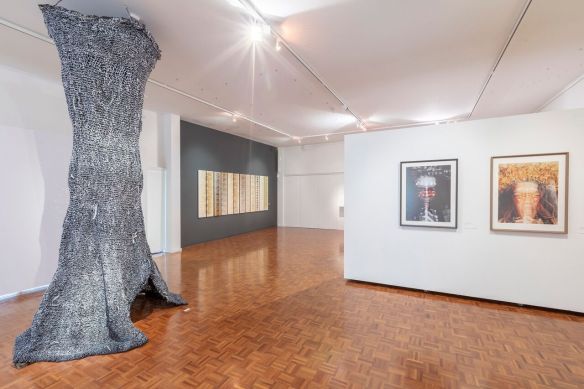
Installation shot of Tree Place with Jill Sampson’s, The Disappearing (2018), Bianca Beetson’s Warrior Woman – Bonyi (2016) and Anne Harris’ Leaf Messages (E. territiconis A Self-Directed Residency with a Tree) (2016). Photo Sam Frysteen.
Tree Place
Noosa Regional Gallery
7 December 2018 to 27 January 2019
In 2015, when artist and curator Anne Harris saved remnants of a fallen ancient Red Gum tree from the tip, she may not have known that the culmination of this act would become Tree Place, a group exhibition including both Settler and Indigenous artists.
However from the start, she did envision for the tree (dated 250-1500 years old) an over-arching collaboration that would grow into connection across Settler and Indigenous cultures. She wanted to initiate a “healing that is in us witnessing each others’ stories in relation to the natural world; to invoke a story for the future and allow us to truthfully walk side by side, authentically knowing each other.” (1)
Harris timed Tree Place to run at the Noosa Regional Gallery during two yearly events: the Christmas season, and Australia Day (26 January) – the official national day of Australia marking the 1788 arrival of British ships at Sydney Cove and the raising of the British flag, claiming the entire continent for the British Empire.
January is also the time to harvest Bunya Tree nuts. In traditional times, this sacred tree (a native of Southeast Queensland) would be the determinant for the Bunya Gatherings. In what were some of Australia’s largest Indigenous historic gatherings, diverse tribes – thousands of people – would travel great distances to stay for months, to celebrate, hold parliament, and feast on the bunya nut. (2) Today, on 26 January the Bunya Dreaming Festival is offered by Aunty Beverly Hand and her family, to highlight the strength and depth of the Sunshine Coast’s Indigenous culture, ensuring its relevance, reminding us that Australia day also marks Traditional Owners’ loss of culture, land and lives, initiated by the 18th century arrival of the British.
For Tree Place (and collaborations leading up to this exhibition), Harris sought to instigate multicultural, aesthetic dialogue using the ancient Red Gum tree as inspiration. Artists were invited to respond to the ancient tree Harris had rescued. Some selected parts of the tree to use in their work, others responded to the nature of place and trees, while others shared a dialogue of the interfacing issues of Indigenous and Settler cultures.
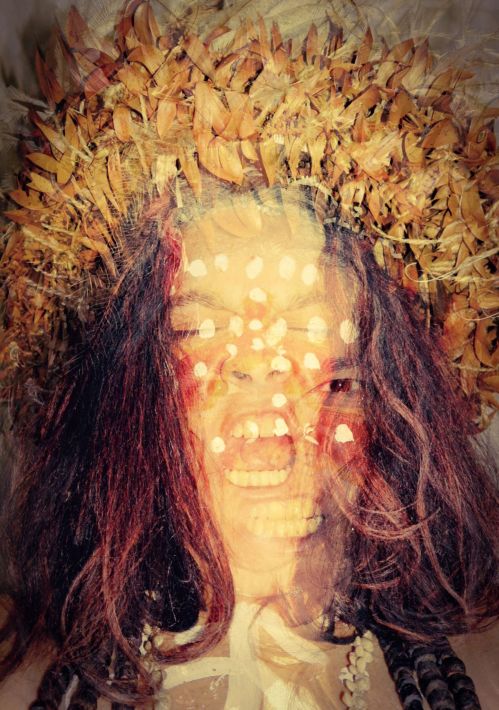
Bianca Beetson, Warrior Woman – Bonyi (2016). Printed digital image, 90×75 cm. Photo courtesy the artist.
Bianca Beetson, a Gubbi Gubbi/Kabi Kabi (Sunshine Coast) and Waradjuri (NSW) woman, references Jesus’ crown of thorns in Warrior Woman – Bonyi (2016). Here, Beetson wears a Bunya (Bonyi) branch crown to signify the higher spiritual connection Aboriginal people have with the earth — and the custodial obligations assigned to them as their birthright. It’s again important to note that Tree Place took place during the Christmas season, further ensuring that First Nations’ stories are heard, seen and witnessed at key times.
The leaves of the Bunya tree are razor sharp and as pointy as straight pins, making for a very painful experience for Beetson to wear such a crown, thereby acknowledging the historical pain of First Australians. Strength and endurance have underpinned the physical and cultural survival of Indigenous Australians since colonisation, and their partnership with nonhumans informs all aspects of Culture.
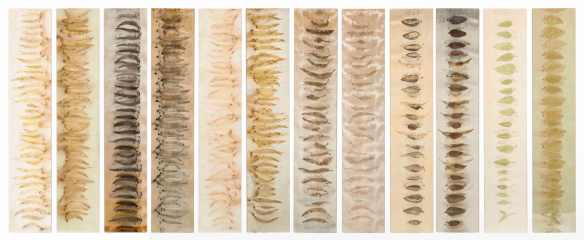
Anne Harris, Leaf Messages (E. territiconis A Self-Directed Residency with a Tree) (2016), 140x360cm, Natural plant pigments on silk, wool. Photo Sam Frysteen.
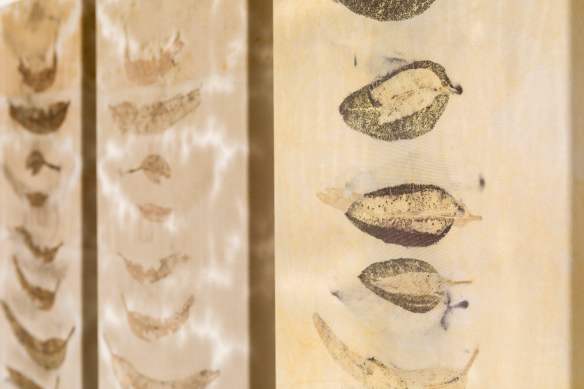
Anne Harris, Leaf Messages, detail (2016). Photo Sam Frysteen.
Harris’ own relationship to the natural world is grounded in her childhood spent living in the Northern Territory – some of those years being on Goulburn Island (in Arnhem Land off the coast of Darwin). There, in close proximity to traditional ways, she witnessed the art of listening to nonhumans and the surrounding landscape.
Currently as an artist, her practice focuses upon trees and other plants and the skills they employ as living beings to build and maintain their worlds (3), as well as their narratives and aesthetic and formal beauty. Her natural printmaking and dyeing, photography and relational community work all form networks and collaborations amongst multiple species and cultures. She is well accustomed to treating both humans and nonhumans as individuals who possess unique subjectivities. For Harris, meeting the Other is a comfortable, fluid situation – and you sense this upon speaking with her.
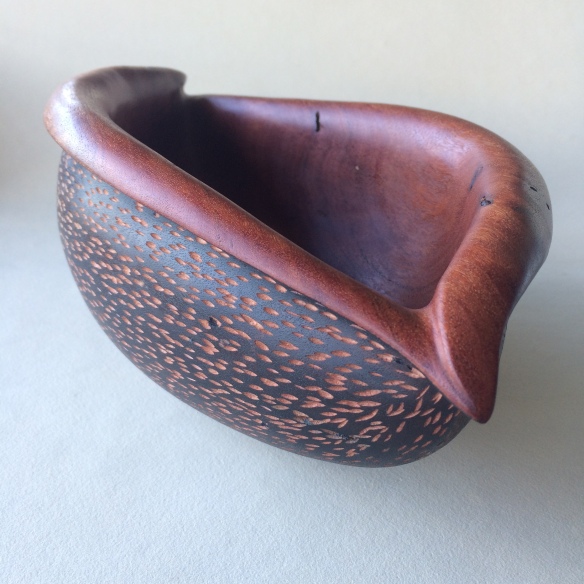
Gary Field, Seed Pod (2018), Ancient Red Gum timber, 90x31x15cm. Courtesy the artist.

Sitting with the Voice of Trees (2018), Leah Barclay (soundscapes) and Ross Annels (design and fabrication), Ancient Red Gum timber, 150x45x60cm. A young visitor uses hearing and touch to experience this collaborative effort fabricated from the ancient gum tree. “Put on the headphones and feel your hair and hands become the twigs and leaves, your head the canopy of trees; hear what the tree hears. Sit gently on the seat and plant your feet; feel the throb of the earth, the pulse of trees as your roots expand into the earth.”(4) Photo Your Life Photography courtesy Noosa Regional Gallery.
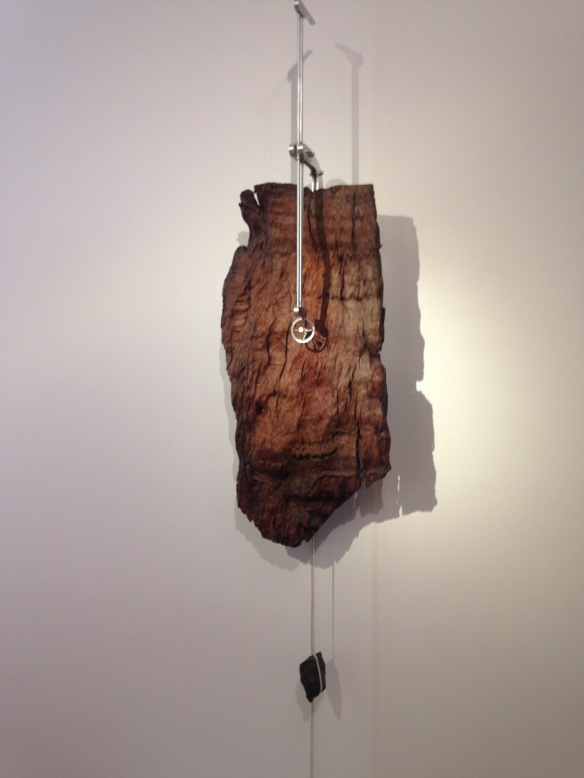
Robert Andrew, Between Movements (2018), Ancient Red Gum bark, metal components, 60x70x10cm.
Robert Andrew holds mixed heritage, as a descendant of the Yawuru people in the Kimberley area (Broome, WA) and with European and Filipino background. Between Movements (2018), excavates “the liminal space between the bark and the timber” of the ancient tree: within these layers are held the stories of the tree’s “experiences and interactions with the place it stood for centuries.” Time and history are embodied in the steady grind of the robotic pin incising this remnant of the ancient tree: potent, hidden narratives are made visible by the material process of steel etching away at unhewn wood to deposit red gum sawdust on the floor below.

Bill Dorman, Where Child Meets the Sky (2017), Steel, Ancient Red Gum timber, copper, sterling silver, 55x50x25cm. Photo Sam Frysteen.
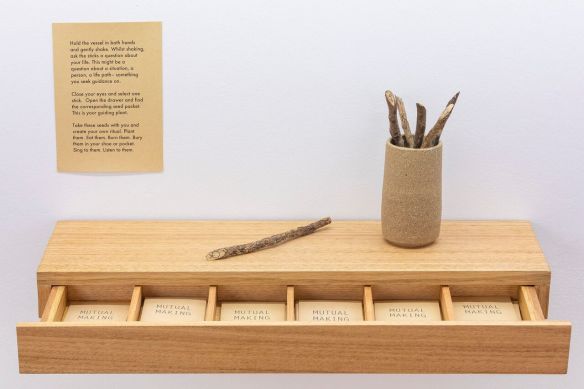
Caitlin Franzmann, Mutual Making (Sacred Seeds) (2018), Timber shelf drawer, seeds, seed packets, ceramic vessel, divination sticks, 6.5x66x18cm. Photo Sam Frysteen.
Caitlin Franzmann’s practice as an artist gives credence to aspects of divination, intuition, faith and the supernatural. Her Mutual Makings (Sacred Seeds) (2018) invites visitors to experiment: to shake the cup of wooden sticks with eyes closed, select a stick and keep the seed packet associated with the chosen stick’s symbol. “This is your guiding plant.” Generosity and mystery inform this work — with the artist offering the gift of knowledge, strength, ritual and perhaps the eventual resolution of a problem. We think about the power of plants to heal and inform, as well as the artist’s role as agent of magic and gentle provocation.
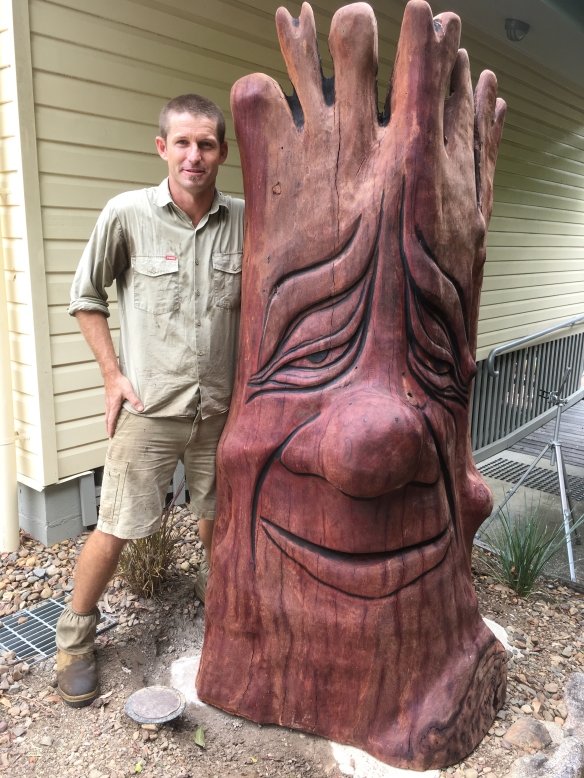
Shane Christensen with his Native Beehive Sculpture, Tree Spirit, carved from the ancient tree’s timber, installed at Wan’din’in Art Space in Eumundi. Photo Wendy Birrell.
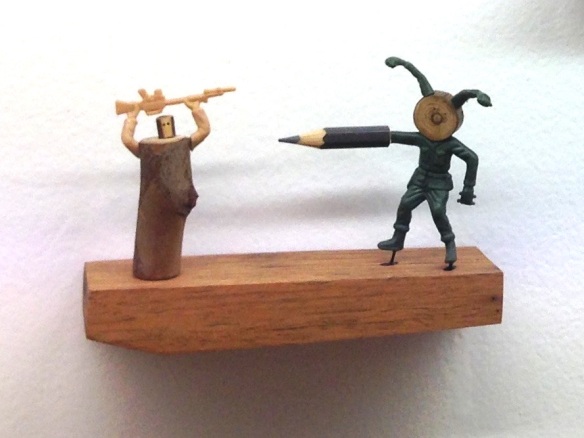
Rebecca Ward, Bushcraft of the Apocalypse, detail (2018), Found objects, parts of ancient tree, dimensions variable. Photo Sam Frysteen.
The visual, textural and material presence of Jill Sampson’s The Disappearing (2018) established a ground-note for the exhibition as a whole – it was a looming ghost of ‘civilised’ humanity’s hubris. Hand looped out of repurposed VCR tape, The Disappearing was both flimsy and foreboding: its tall, figurative form mirroring back to the viewer our contemporary enthrallment to a throwaway society. Here, Sampson also questioned the way that images (for example, on video tape) can bend the truth to perpetuate the fantasy that big, old trees still survive — when in actuality it’s becoming harder and harder to find them in the forest.
Tree Place stands as a thoughtful, optimistic and inspiring exhibition – beautifully curated and brought forth as a labour of love: a multi-species, multi-cultural exploration of 28 artists’ responses, community workshops, and many tree-related projects and explorations. As viewed in the Noosa Regional Gallery, which is snugly situated on the Noosa River, the show acted as immersion in the building of community across cultures – envisioning a mutually sustainable connection with the natural world.
(1) Email to me from Harris (10/02/2019).
(2) https://en.wikipedia.org/wiki/Araucaria_bidwillii
(3) For more about trees and their methods of communication see: https://www.smithsonianmag.com/science-nature/the-whispering-trees-180968084/
(4) Ross Annels & Leah Barclay, Artist Statement.
https://www.anniesworkroom.com.au/
http://www.experienceeumundi.com.au/see-do/wandinin-art-space/
https://www.facebook.com/pages/category/Event-Planner/Bunya-Dreaming-259287200803640/
Tree Place Artists:
Amanda Cole
Ancient Tree
Angus McDiarmid
Anika Annels
Anne Harris
Bianca Beetson
Bill Dorman
Caitlin Franzmann
Carol Russell
Gary Field
Jandamarra Cadd
Jeff Frazer
Jill Sampson
Joolie Gibbs
Leah Barclay
Lyndon Davis
Melinda Heal
Melissa Stannard
Noosa Pengari Students
Rebecca Ward
Richard Vaughan
Robert Andrew
Ross Annels
Scott Pilkington-Jones
Shane Christensen
Tamsin Kerr
Tim Johnson
Viki Murray
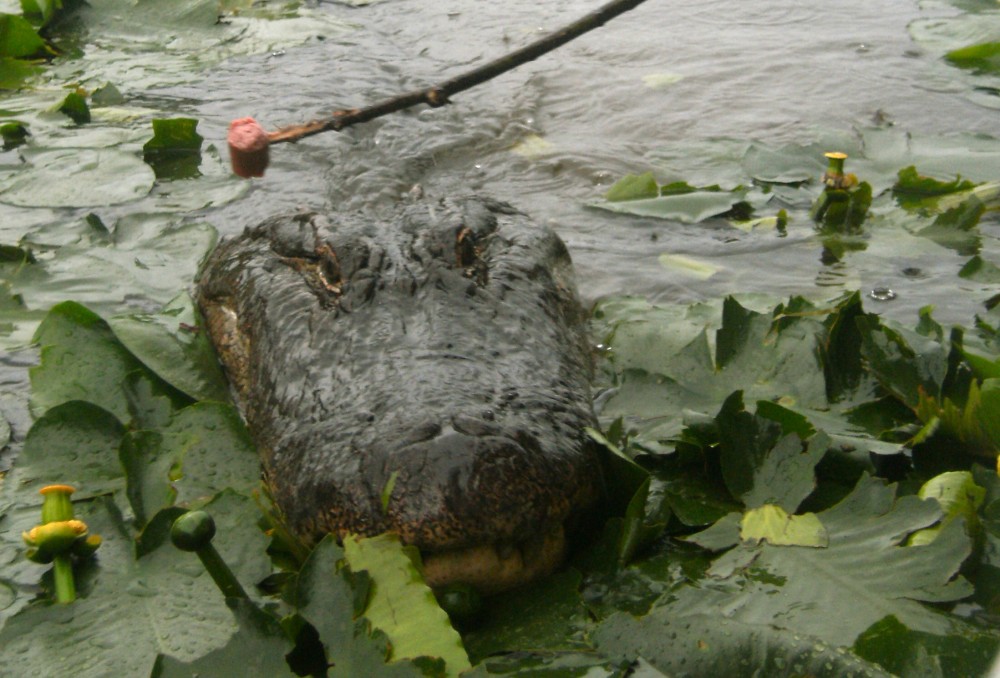
Your words wonderfully capture the spirit of this exhibition.
Thanks Lisa!